Subscription churn metrics and benchmarks for operators.
Plus my 10 go-to churn reducing tactics.
Sponsored by Churnkey - the platform that helps companies save 20–40% of subscription revenue that would otherwise be lost to churn. Used by best-in-class companies like Jasper and Superhuman to proactively improve retention. Implement Churnkey today →
SEO - dead. Paid Marketing - dead. Engineering - dead too. (kidding!)
But you know what’s never dead? Churn.
Once you find product-market fit and start scaling, churn becomes the invisible ceiling on your business. No matter how strong your acquisition game is, if you don’t address churn, it will hold you back.
In this post, I’ll break down both published and personal churn benchmarks to help you understand how your retention efforts really stack up.
And yeah yeah, AI might change future monetization models to be more consumption-based… but for now, a lot of us are still managing good ole’ subscription models. So let’s talk about how to improve churn in those.
One quick caveat: benchmarks are highly contextual. Use them as reference points - not targets - and always evaluate them in the context of your product and market.
Not so helpful, yet widely available, churn benchmarks
Widely available churn benchmarks usually focus on Net Revenue Retention (NRR) and monthly churn rates. They’re useful for getting a high-level snapshot of the business - especially if you’re an investor or a CFO.
But these metrics just tell you that churn exists (duh!). They don’t tell you where the problem is or how to fix it. Which means, for operators, they’re often not that helpful.
I’ll cover them anyway - for comprehension’s sake. But the next section is where we’ll dig into the churn benchmarks I actually find valuable for diagnosing and improving retention.
Net Revenue Retention (NRR) benchmark
Formula: NRR = (Starting MRR + Expansion MRR - Contraction MRR - Churned MRR) ÷ Starting MRR
Excellent: >120% - expansion not only offsets, but exceed churn
Good: 100–120%
Poor: <100% - expansion does not offset churn
Leading SaaS companies (like Snowflake, Datadog, etc.) often report NRRs of 120–130%+ and investors eat that right up.
This is the golden goose of any B2B business - it tells you whether expansion from existing customers is enough to offset churn, which takes pressure off acquisition to constantly fill the gaps.
For B2C, though, it’s a different story. Most B2C individual businesses lack strong upsell or expansion levers, so they have to be obsessed with top-of-funnel growth to make up for their churn. Spotify’s NRR, for example, is estimated to be at 75%.
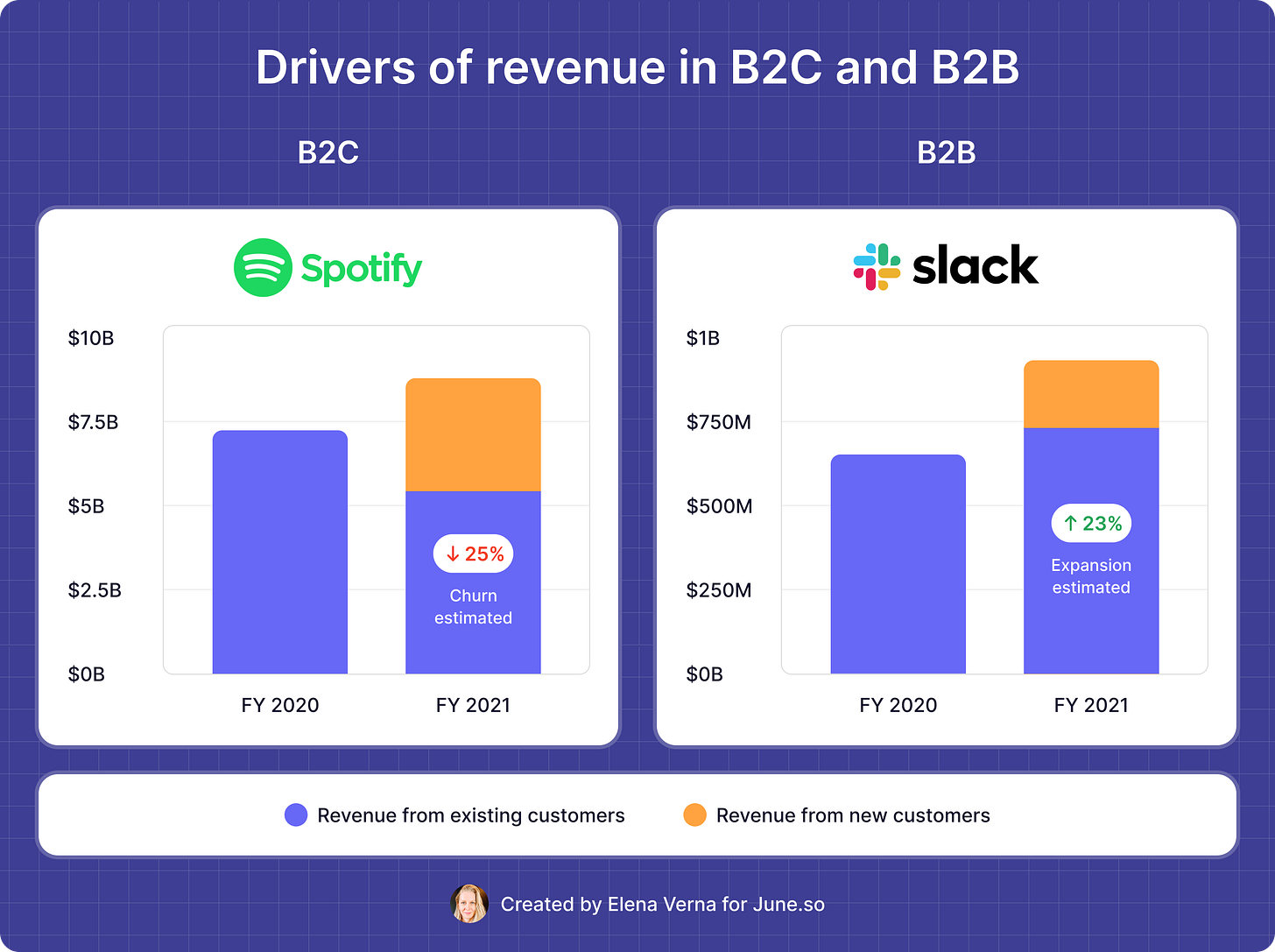
Bonus: read the best way to visualize retention in my post here.
Monthly churn rate benchmark
Formula: Monthly Churn Rate = (Churned Customers in a Month ÷ Total Customers at Start of Month) × 100
Benchmarks (source - Lenny’s newsletter):
Churn rates vary wildly by industry and product type (source - Churnkey)
Lesson here is not to go into subscription box business (there goes my dream of selling growth swag boxes).
But also... don’t get fooled by seemingly low 5% churn rate. Even 5% monthly churn rate results in losing 46% of customers annually. Monthly churn rates above 10% lead to annual churn rates over 70%, which would be catastrophic for most businesses. You’re effectively replacing your entire customer base each year. Just imagine how hard it is to grow those businesses.
Another thing that matters - age of the business. Older businesses will naturally have lower churn because they will have older customers who tend to churn less. Because most of the churn actually happens in earlier terms, specifically first term.
Operator focused churn benchmarks
First-term churn
My favorite churn metric to actually work on is first-term churn. First-term churn is when a subscriber reaches their first renewal point - and ends up churning. It’s where the majority of churn happens, both in volume and rate. If you’re wondering where to start your retention efforts, this is it.
To visualize it: take any given cohort of paid subscribers and map their churn by term. You’ll almost always see a huge drop after the first renewal point. That’s where the cracks in your product experience become painfully visible.
It is considered “good” to have ~25% of customers churn after their first term - whether they are on monthly or annual subscription term. That’s right, folks - you read it correctly: first-term churn averages around 25% for both monthly and annual subscriptions. Which is exactly why tracking the annual mix of your subscriber base is so important - they just retain so much better.
If your churn >25% in the first term, you’ve got yourself a juicy opportunity.
Why is first-term churn so high? Because most customers buy for the first time based on a promise - the marketing, the onboarding, the shiny features. If you fail to deliver actual value fast enough, they’ll bounce. This is the term where that disappointment shows up loudest.
Voluntary churn: auto-renew cancellations
One critical behavior to watch is customers voluntarily leaving via auto-renew cancellations, which tend to cluster into two phases:
~50% cancel right after subscribing (the classic “cancel so I don’t forget later”)
~50% cancel in the final week before renewal
That last group? They’re already mentally checked out. They came, they saw, they didn’t find the value. You’re probably not winning them back (unless you are willing to offer discounts). But the early cancellers - the ones who cancel within days of signing up - they’re the best shot you have at recovery. You should be recovering at least 20% of them.
Side note: this metric is a fantastic early churn predictor. When you’re testing new experiences, you often don’t have the luxury of waiting until the next renewal cycle to see retention impact. That’s where tracking auto-renew off events shines - they’re fast, reliable signals that strongly correlate with future churn. Use them as your early warning system.
Cancellation reasons
Always, always ask why people are churning. Most reasons fall into these buckets and have the following distribution of responses:
“Too expensive” and '“Don’t need it anymore” will almost always be your top reasons for churn. This is where discounting and engagement efforts should deliver a lot of value. The rest are red flags for your core product team to deal with. For example, if usability is a big problem, your UX team needs to be empowered more.
Involuntary churn
Involuntary churn happens when a subscription ends due to payment failure (expired cards, insufficient funds, or billing errors), not because the user actively chose to cancel.
Involuntary churn isn’t usually a huge issue for monthly subscriptions in early terms - unless you have a large base of debit card users, which are more prone to failed payments.
But for annual subscriptions, it’s always a big deal. On average, about 40% of annual first-term churn is due to involuntary reasons. And it gets worse as your business matures - the more time that passes since you first collected payment info, the higher the chance that information is outdated or invalid.
No matter how solid your payment processor is, credit cards get lost, stolen, reissued, or flagged for fraud. We’ve all felt it - my own card seemingly gets reissued almost every year, and like clockwork, most of my subscriptions fail right along with it.
Insufficient funds is almost always #1 reason for involuntary churn - usually hovering around 40% of involuntary churn reasons. This differs by country, with US/UK/AU/CA performing similarly against rest of the world (see India as an example below).
Sounds scary, but no need to panic - you should be recovering at least 50% of these failed payments through your retry logic (automatic retries, card updaters, smart dunning flows, etc.).
Involuntary churn is annoying because it’s preventable. Make sure your billing systems are set up to catch and recover as much of it as possible. It’s the kind of invisible leak that adds up fast if you’re not paying attention. Churnkey focuses on just this, so give them a try.
How about mobile?
Mobile app retention is brutal. It all starts with terrible engagement - the average app loses 77% of its daily active users within the first 3 days after install, with average retention rate Day 30 on iOS – 4.13% and 2.59% on Android (source).
Top mobile apps like Netflix and Spotify report churn rates in the low single digits, but they are the outliers. The monthly churn rate for subscription apps is around 15% for monthly subscriptions, with first-term churn loosing good 40% of subs. Break down by industry:
Annual subs usually see monthly churn rate of 50-60% (source), with first-term churn seeing 70% drop. Break down by industry:
This means you are turning over your monthly subscriber base almost entirely every year and annual every 2 years. I’ll say it again… BRUTAL.
Ten churn tactics I find essential across the board:
Paid feature utilization. If users aren’t using what they paid for, they won’t stick around. Set usage targets for your paid features and drive them up, up, and to the right.
Don’t wait till churn happens:
Get activation right. This means nailing setup, hitting the “aha!” moment quickly, and building habit loops. I wrote more about this here.
Ensure healthy ongoing engagement from paid users (your paid WAU). Monitor usage, depth, and frequency - not just logins.
Make reactivating auto-renew one click. Across every surface - app, web, email, everywhere. This is such an easy win - 10% of your cancels should be resubscribing before subscription end!
Be aggressive with payment failure comms. Hit users through both email and in-product notifications. In product is a key word here, especially if they are still active.
When users cancel auto-renew, show them what they’ve used and what they’ll lose. Make the cost of leaving clear. Canva does this best.
Score users for churn risk. Offer discounts or even comped time for “high-risk” - this can save as much as 5% of your churn.
Offer a pause option. Especially helpful if you serve users with occasional or seasonal needs.
Make your pricing and packaging flexible. Let users move down the tiers during cancellation flow without friction - don’t lock them in.
Move your tenured monthly customers to annual subscriptions. After first-term churn, take whoever’s still on a monthly plan and start nudging them toward annual. If your annual plan offers a discount compared to monthly (as it should), lead with something like: “Get your next X months free by switching to annual.” A good target is to move about 20% of your remaining monthly subscribers to annual by the end of their first year. It's one of the easiest ways to reduce churn and boost LTV.
Human touch for high-value accounts: If you're B2B or high ARPU B2C, personal outreach from support or success teams can go a long way.
And always remember - subscription churn is an outcome, not the root cause. The real inputs are poor activation and weak engagement. So if you're only focused on optimizing churn in isolation, you’ll never see meaningful, step-function improvements. You have to fix the underlying issues first - otherwise, you're just treating symptoms.
Other good resources for benchmarks:
Open View benchmarks reports (I really like these)





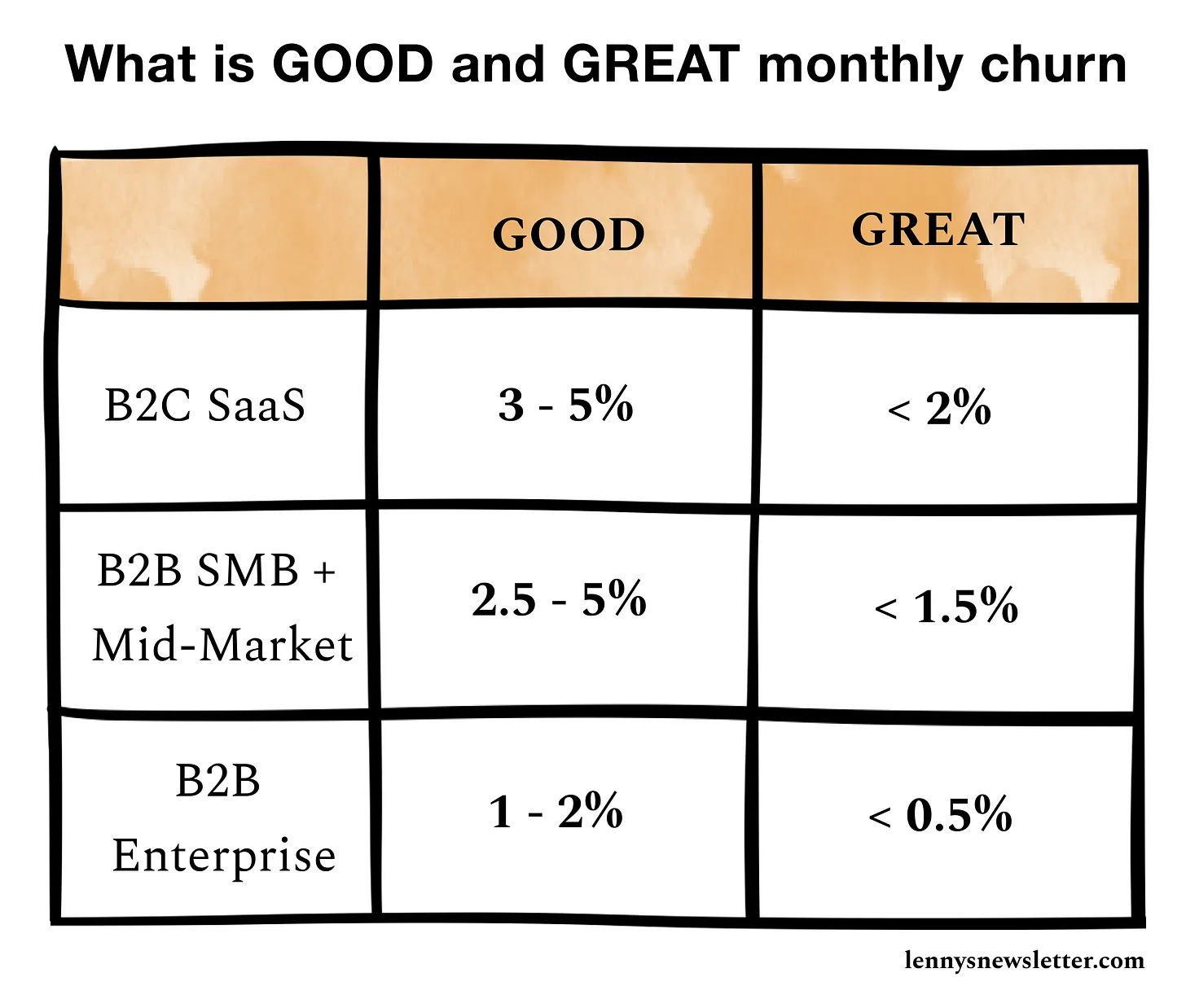
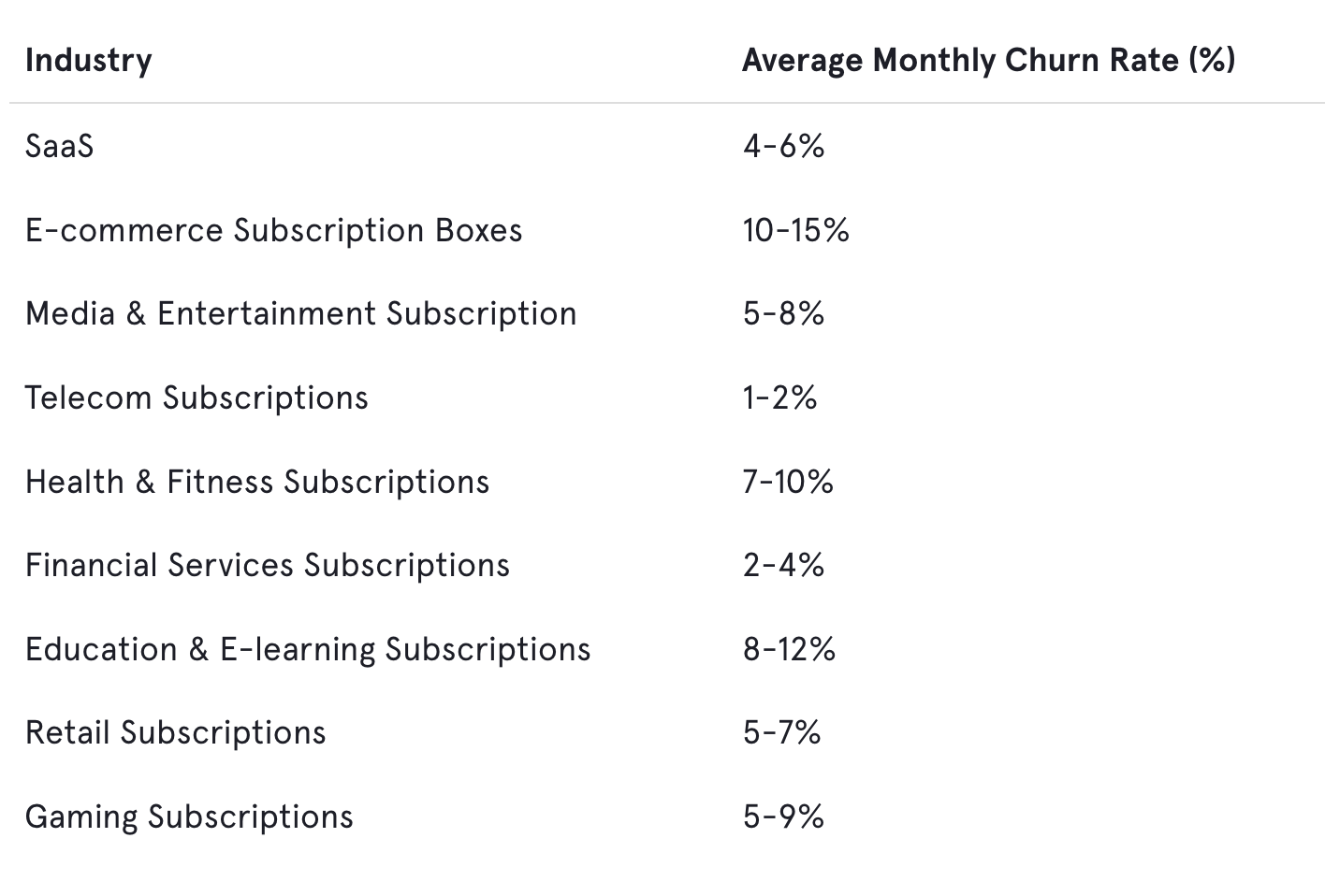
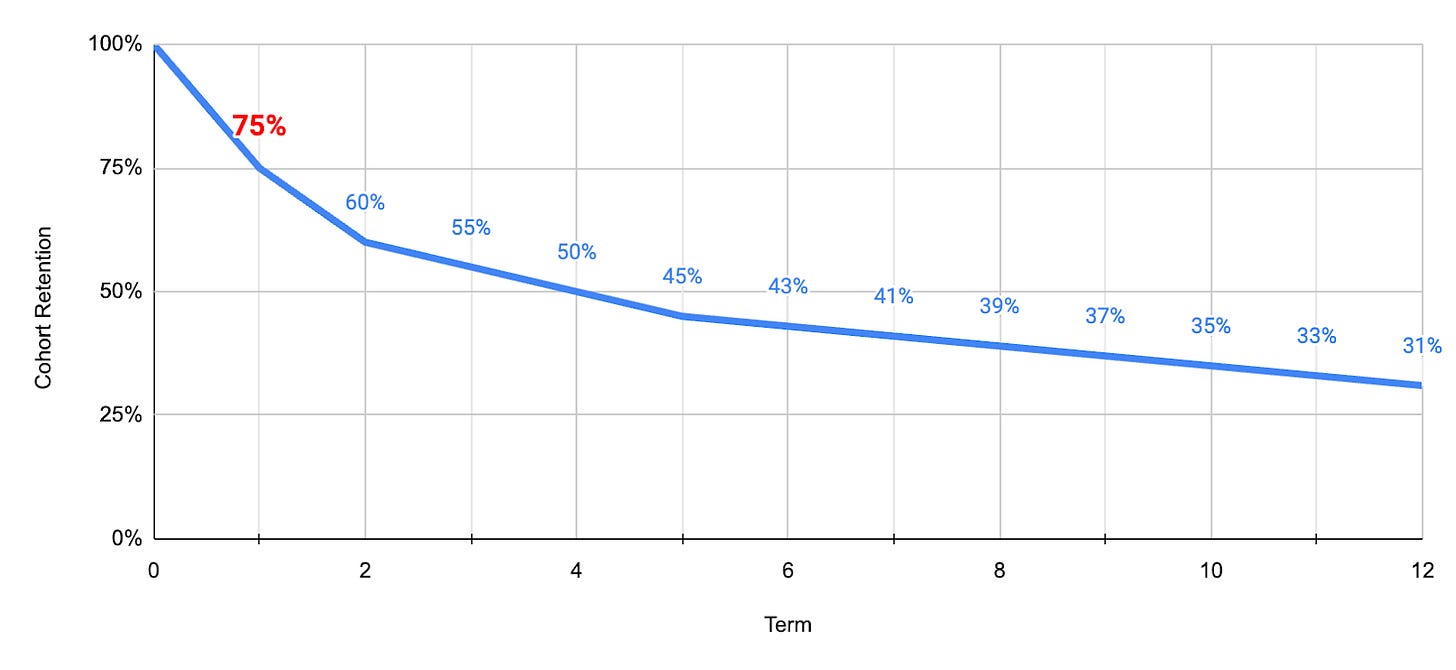

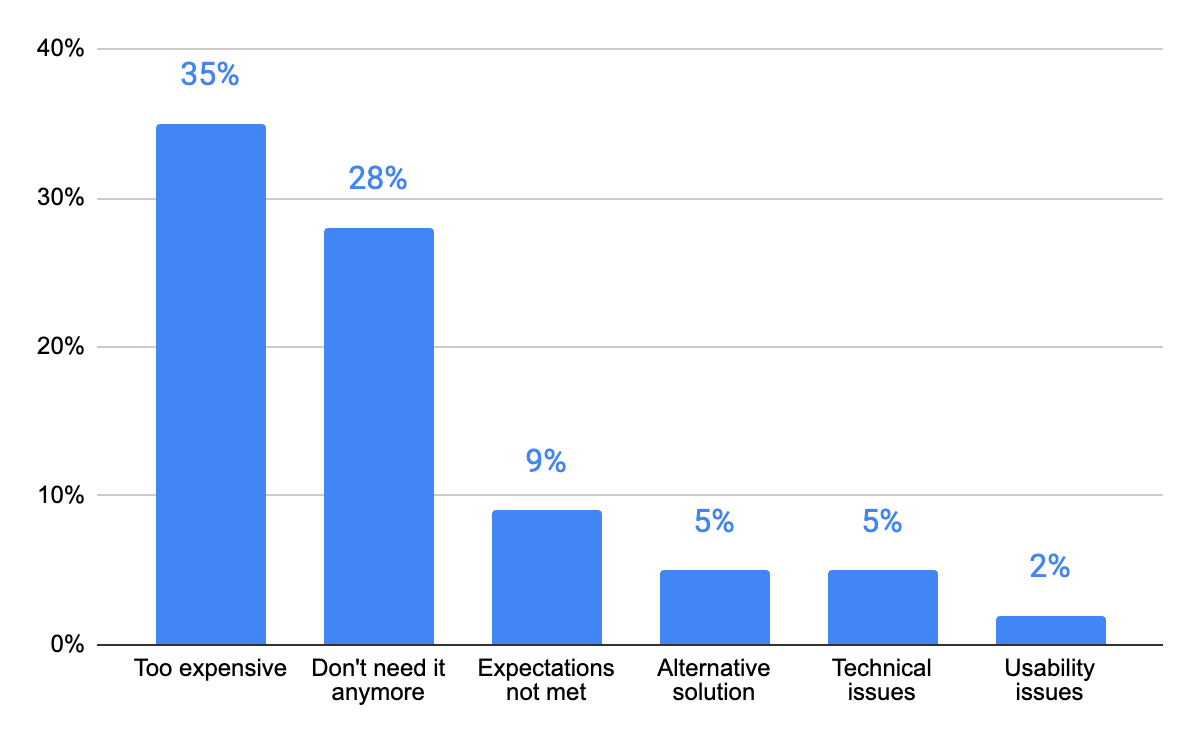

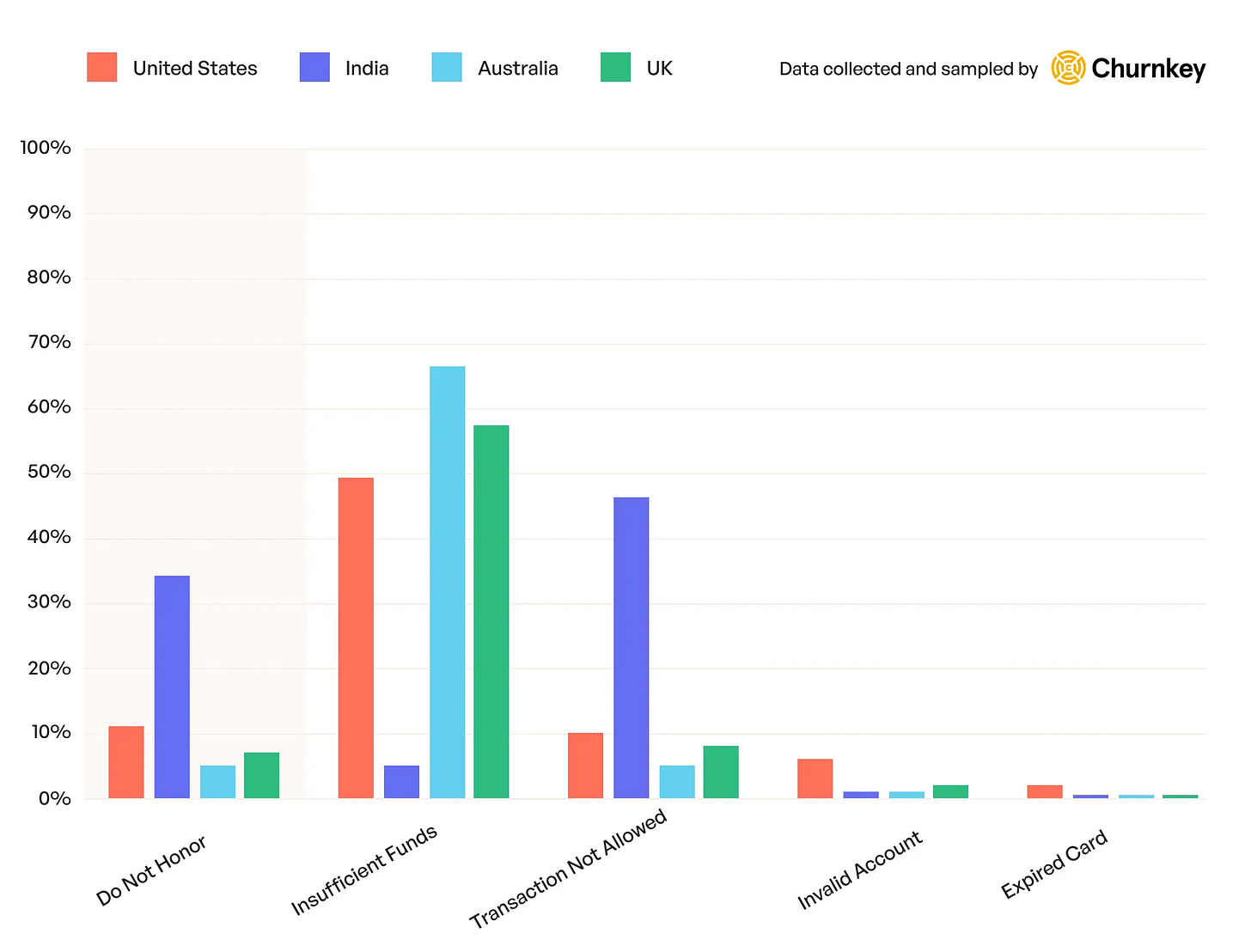

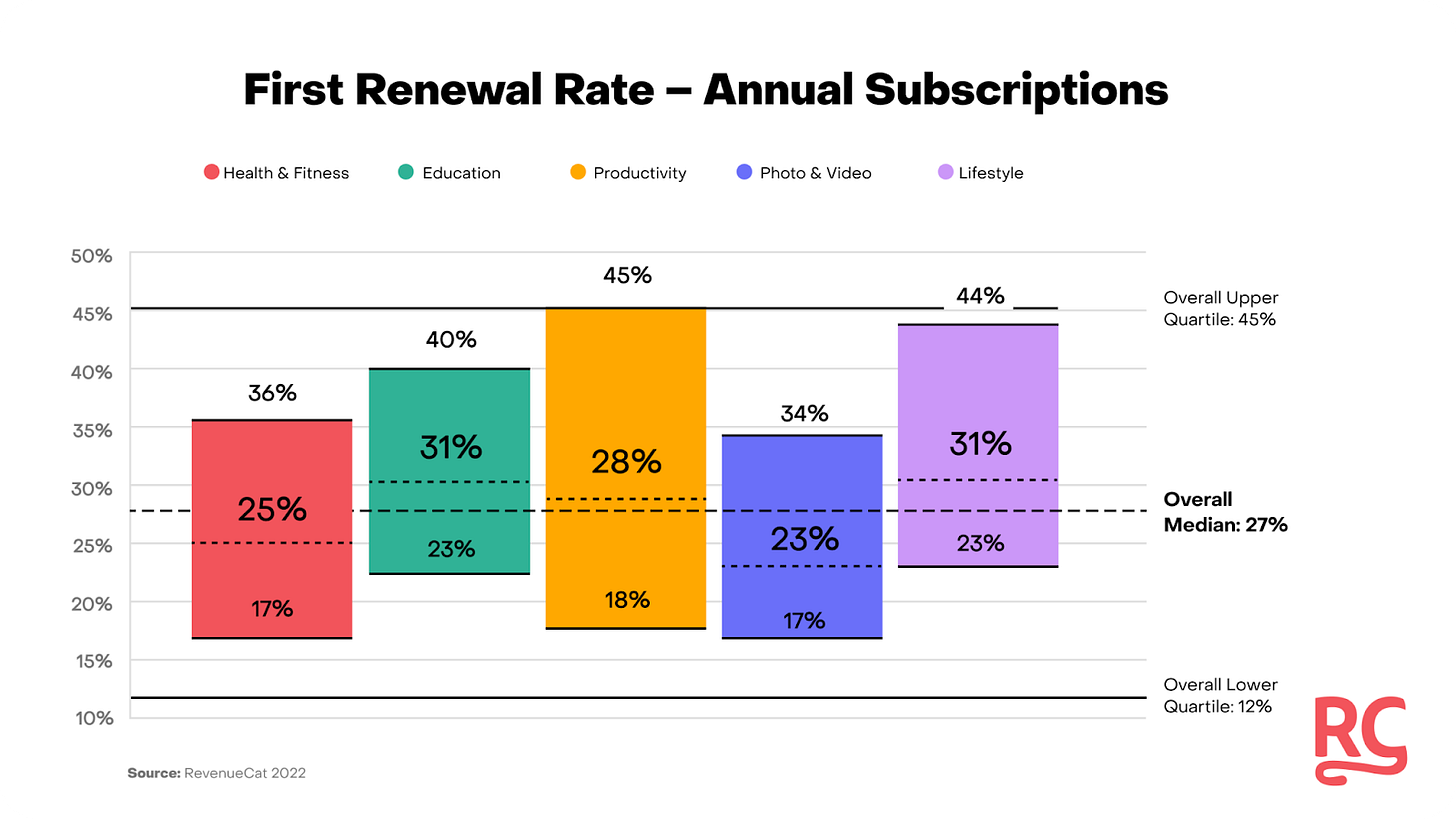
"SEO - dead. Paid Marketing - dead. Engineering - dead too. (kidding!)
But you know what’s never dead? Churn."
Gold!
Súper thankful - just started a new role and I’m focusing on churn 🤓🤓 this is AMAZING ELENA THANKS